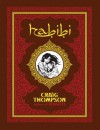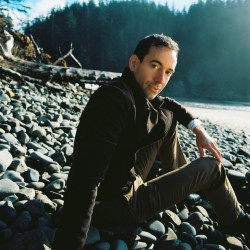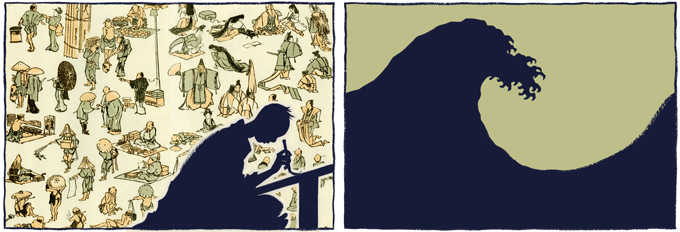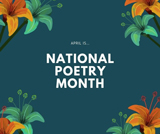It is with much gratitude that a graphic novelist accepts an award bestowed upon such brilliant company of prose writers. And it’s intimidating to play in the field with these wordsmiths, since I myself am clumsy with words and far more graceful and expressive with drawings. Yet, making stand-alone drawings doesn’t hold my interest. I draw in service of a narrative, so that the drawing itself disappears. Movement and magic is sparked in the space between sequential images.
Booksellers and librarians seem excited, yet wary, for the manga and graphic novel phenomenon that has tempted a new generation into bookstores. Manga volumes are buckets of chum tossed to a swirling frenzy of insatiable young readers. But seeing the manga section ravaged daily, are we disgusted or inspired by those fierce appetites? If you crack open a book to find it full of pictures, do you feel tricked? Are graphic novels simply comic books repackaged in a more acceptable format for marketing purposes?
Sometimes I think the container is more precious than the ideas within (as with fancy sports cars). Books are fetish objects we line our nests with, insulate the walls, fill lonely spaces . . . The physicality of a bookstore with its smoldering pulp radiates warmth not found in the cold matrix of the digital world.
I just returned from a three-month book tour and was discouraged to see eBooks as the requisite travel accessory, the airports littered with travelers hunched over smart phones and Kindles and iPads. It’s true, Bolaño’s 2666 takes up a lot of space in your carry-on bag, but that’s the point! It’s like a pet that requires a 5am walk. The heft is a symbol of commitment —a marriage band.
Though I’ve never flown first class, I sometimes wear a suit on the plane out of old-fashioned romanticism for that era of donning your Sunday best for an excursion. Now, the standard travel uniform is pajamas, and grown men spend the flight fiddling with video games on their iPads. So eBooks are the literary equivalent of sweat pants. There’s something dumpy and lazy about them that lacks the dignity of a trusty and cumbersome paper tome.
My technophobia extends to the writer’s process. The recurring motif in cinema of a freshly finished manuscript being scattered by the wind or burned in a fire is far more savage a drama than the computer crash that modern authors contend with. (Don’t forget to save frequently.) Gone is the brutish clatter of a typewriter or the quiet ritual of sharpening a quill and plunging an inkwell. This is one reason I draw—to keep an old world discipline, like cobblery, alive.
On book tour, Paris was the exception. Say what you will about French pretention, it was refreshing to see their national pride in real-life books. Everyone at Charles de Gaulle carried a book made of actual paper, perhaps salvaged from a bouquiniste at the edge of the Seine. Others were jotting notes in paper journals. Even though I draw every single day of my adult life, it is the most curious and jarring sight to witness someone drawing in public. I’ll creep closer to spy a glimpse of the sketchbook, but it doesn’t matter the results—the more amateur the better, because it eliminates the suspicion of exhibitionist performance. They are drawing for themselves.
There’s a raw, human vulnerability to a drawing. When Kurt Vonnegut or Saint-Exupéry scrawl a cartoon in the margins of their own prose, it punctures the barrier of typography. Henry Miller’s Insomnia: Or the Devil at Large is printed in his own cursive script accompanying middle-of-the-night “word paintings”—collages of watercolor and text. Even at age 75, his words swagger—but the drawings and handwriting convey a fragility necessary in his work.
With graphic novels, you see the author’s hand on the page; the ink drawings are an extension of handwriting. Prose may transition easily to the eBook format, because typography has always maintained a technical arms-length from the reader. But drawings still require a tangible paper canvas, and reading a graphic novel has the intimacy of unfolding a hand-written letter from the author. For this reason, manga may keep a foothold in print longer than prose.
The term “manga” originated from Japanese painter/printmaker Katsushika Hokusai (1760-1849) to label his fifteen-volume visual encyclopedia—a Noah’s ark of three-color prints setting down in drawn form all that was observable—every animal, plant and human activity.
But Hokusai is known to most of us for his woodblock print The Great Wave off Kanagawa, with its striking negative space that juggles perfect yin-yang balance with the drawn field. Hokusai contributed at least 40,000 drawings to his manga, but he’s remembered for what he didn’t draw.
Prose books are the same. The page count doesn’t matter nor the degree the author prances about and cries for our attention, because the story needs to be a dialogue with the reader.
Endings are the hardest part, because endings don’t exist in real life. Certainly not in history. Death is an end of sorts, but not really . . . So ending a book means finding the right moment to pull away, to let go of an author’s parental control, and hand the baton to the reader. Because that’s where the story lives: in the relationship the reader continues with the characters after all the words are used up.
Oral tradition, theater, novels, graphic novels, even eBooks are simply containers that carry stories. God bless the booksellers for lugging these containers around for us.
The Persian poet Rumi (a major inspiration for my book Habibi) invites and reminds us to shatter the container. Keep breaking your heart until it opens.
 Craig Thompson’s graphic novels include Goodbye, Chunky Rice, Blankets, Carnet de Voyage and Habibi, for which he won a 2012 Book Award from the Pacific Northwest Booksellers Association. Thompson will receive his award and give a talk this Saturday, February 11 at 2pm at Cannon Beach Book Company (actually, at the library across the street). Thompson, who lives in Portland, says he chose Cannon Beach Book Company because it’s “an impressive book shop that’s a comfort to peruse on a rainy day at the coast, but also because Cannon Beach is a spiritual sanctuary where I’ve been nourished by the ocean in the company of friends, sea lions, probably some sharks, and occasionally sun.”
Craig Thompson’s graphic novels include Goodbye, Chunky Rice, Blankets, Carnet de Voyage and Habibi, for which he won a 2012 Book Award from the Pacific Northwest Booksellers Association. Thompson will receive his award and give a talk this Saturday, February 11 at 2pm at Cannon Beach Book Company (actually, at the library across the street). Thompson, who lives in Portland, says he chose Cannon Beach Book Company because it’s “an impressive book shop that’s a comfort to peruse on a rainy day at the coast, but also because Cannon Beach is a spiritual sanctuary where I’ve been nourished by the ocean in the company of friends, sea lions, probably some sharks, and occasionally sun.”






[…] tour made him appreciate the materiality of books, the importance of their container, even more. (Cool drawings, included.) (Northwest Book […]
. . . great essay, craig, really enjoyed this!